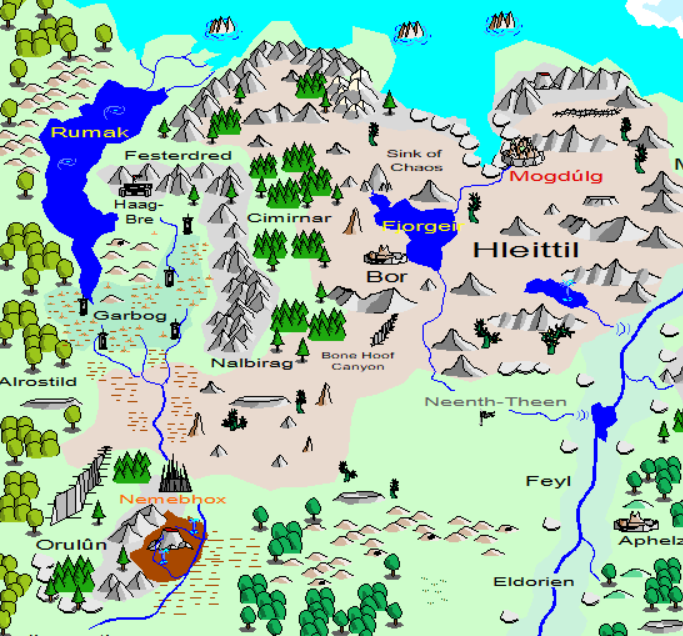
| Category | Wars | |||||||
| Period | 1317 - 1324 | |||||||
| Theater | Ice Cap | |||||||
| Belligerents |
| |||||||
| Map | Aettein |
The Nalbirag Gold War began when a Neeth-Theen backed mercenary army marched into the Nalbirag mountains. This force was led by a Conclave wizard named Râlê Yanizabâr. This greedy khazarkar instigated the conflict that would unfold, convincing his backers that Rumak's petrified giant, the mighty primordial Hettar, son of Piranoth, was a source of great power. Râlê told them the god-like being had such magical power that it would serve well their goal of becoming a premier power of the region, one respected and feared like the Khazarkar Empire. Râlê on the other hand was only interested in the area's gold, using his benefactor's armies to seize mines controlled by two great merchant houses. One was overseen by a goblin merchant lord of the Ku'tiro family. They were known for efficiency and shrewdness, as well as being of an ancient bloodline with heroic legends dating as far back as the Demon Spawn War and the founding of Nemebhox. The Ku'tiro's were based out of Haag-Bre, laying claim to the area's river-side mines. The upper mines, facing the dreaded Festerdred valley were claimed by the Ilad clan out of Azudushmanam.
In the second year of the war, 1318, Haag-Bre was captured by an army of Mamorians and chaos aberrations. With Nemebhox's navy controlling Rumak and its waterways, Râlê could go no further.
In 1322, Râlê's gold counting was interrupted by an alarm. Haag-Bre was assailed from beneath by a Uromon army. The next day, Nemebhox took a more active role in the war, putting Haag-Bre under naval bombardment.
A month later, nearing fall, Râlê summoned help from the Abyss. Foiled when Uromon assassins got into the summoning chamber, messin up Râlê's spell, instead of gating in a bunch of petty demons, hundreds of abyssal cows stampeded about Haag-Bre. Combat turned to fighting the foul smelling cows as defenders and attackers fought back to back against water buffalo sized beasts.
After Râlê lost Haag-Bre, he fled back to Malardân. Neeth-Theen continued the war, returning to Haag-Bre only to be defeated by a Uromon army in 1324. After the war, Haag-Bre became a holding of Nemebhox.
In their fighting with Neeth-Theen, Uromons reported all manner of entropic creatures serving in the ranks of Neeth-Theen - rhino-sized quadrupeds with distorted dwarven heads, huge hill giants with three and four arms, at least one a club-like mutation, Mamorians, and two-headed entropic goblins with arms shaped into bony sword-like appendages.